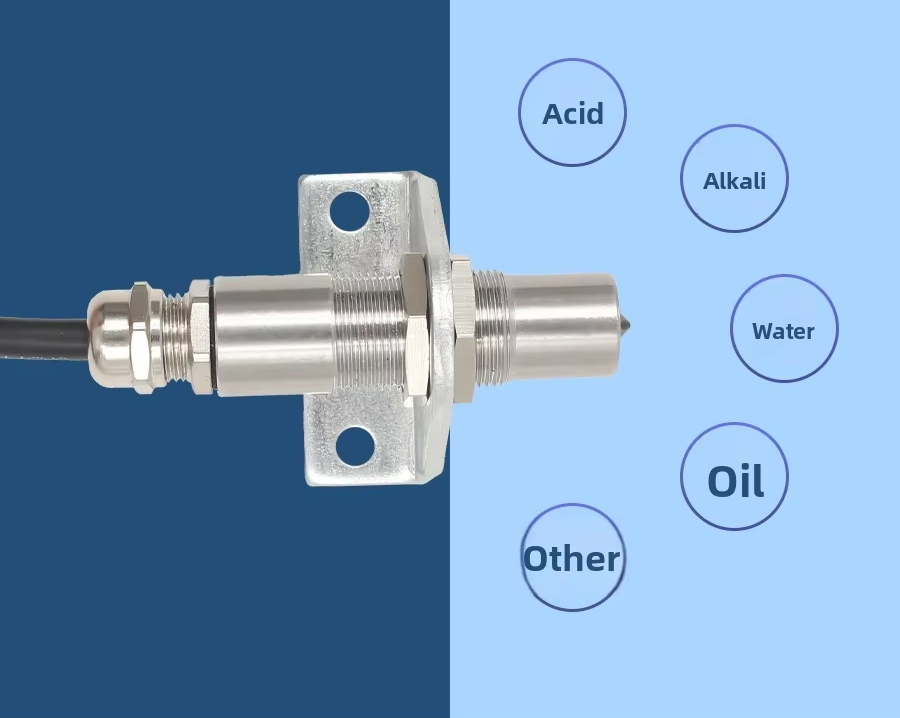Stainless steel water leak sensors are critical devices used for detecting water presence in industrial, commercial, and infrastructure environments. Their robust construction and advanced functionalities make them particularly valuable in Southeast Asia, where industrial growth, climate challenges, and infrastructure development are key concerns. Below is a detailed analysis of their characteristics, applications, and industrial impact in the region.
1. Key Features of Stainless Steel Water Leak Sensors
Stainless steel water leak sensors offer several advantages due to their material and design:
- High Corrosion Resistance
- Made from 304 stainless steel, these sensors resist rust and chemical degradation, making them ideal for harsh industrial environments, including wastewater treatment and marine applications.
- Suitable for long-term submersion without performance degradation.
- Durability & High-Temperature Tolerance
- Can withstand extreme temperatures, ensuring reliability in tropical climates and high-heat industrial settings.
- Non-Contact & Low Maintenance
- Unlike mechanical float sensors, stainless steel variants (especially radar-based models) avoid mechanical wear, reducing maintenance needs.
- Multi-Functional Integration
- Some advanced models combine water detection with temperature, humidity, and pressure sensing, providing comprehensive environmental monitoring.
- Wireless & IoT Compatibility
- Many modern sensors support LoRaWAN, NB-IoT, and 4G for real-time remote monitoring, crucial for smart factories and automated industrial systems.
2. Major Applications in Industrial Settings
Stainless steel water leak sensors are widely deployed in:
A. Manufacturing & Industrial Facilities
- Data Centers & Server Rooms: Prevent electrical failures by detecting leaks in cooling systems and underfloor piping.
- Automotive & Electronics Plants: Monitor water ingress in production lines to avoid equipment damage.
B. Infrastructure & Utilities
- Water & Wastewater Management: Detect leaks in pipelines, sewage systems, and pumping stations.
- Power Plants & Substations: Prevent flooding in cable trenches and electrical rooms, reducing downtime.
C. Smart Cities & Public Safety
- Flood Monitoring in Urban Areas: Used in rainwater drainage systems to prevent urban flooding, a growing concern in cities like Jakarta and Ho Chi Minh City.
- Fire Protection Systems: Ensure sprinkler systems and hydrants are leak-free.
D. Agriculture & Food Processing
- Irrigation Control: Detect water leaks in automated farming systems, improving efficiency in Vietnam and Thailand’s agricultural sectors.
- Food Storage Facilities: Prevent moisture damage in cold storage warehouses.
3. Impact on Southeast Asian Industrial Development
Southeast Asia’s rapid industrialization and infrastructure expansion make stainless steel water leak sensors crucial for:
A. Enhancing Industrial Safety & Efficiency
- Factories in Vietnam and Indonesia increasingly adopt these sensors to prevent water damage to machinery, reducing costly repairs and production halts.
- Smart manufacturing initiatives in Thailand and Malaysia integrate these sensors into IoT-based predictive maintenance systems.
B. Supporting Climate Resilience
- With frequent monsoon floods, sensors help early flood detection in industrial zones, minimizing economic losses.
- Used in coastal industrial parks (e.g., Vietnam’s EEC zones) to monitor storm surges and drainage systems.
C. Driving Smart Infrastructure Growth
- Singapore and Malaysia incorporate these sensors into smart building management, improving energy and water efficiency.
- Philippine and Indonesian data centers rely on them for leak prevention, ensuring uninterrupted digital services.
D. Facilitating Foreign & Local Investment
- Chinese sensor manufacturers (e.g., Shanghai Mingkong) are expanding in Vietnam and Thailand, supplying industrial automation needs.
- Local firms in Indonesia and the Philippines adopt these sensors to comply with international safety standards, attracting global investors.
4. Challenges & Future Trends
Despite their benefits, adoption in Southeast Asia faces:
- High Initial Costs: SMEs may struggle with upfront investments in advanced sensor networks.
- Technical Expertise Gaps: Need for skilled personnel to maintain IoT-integrated systems.
Future Outlook:
- AI-powered predictive analytics will enhance leak detection accuracy.
- Government incentives (e.g., Thailand’s EEC policies) may drive wider adoption in industrial zones10.
Conclusion
Stainless steel water leak sensors play a pivotal role in Southeast Asia’s industrial growth by improving safety, efficiency, and climate resilience. As smart manufacturing and infrastructure projects expand, their adoption will accelerate, supported by foreign tech partnerships and local policy initiatives.
please contact Honde Technology Co., LTD.
Email: info@hondetech.com
Company website: www.hondetechco.com
Tel: +86-15210548582
Post time: Jun-16-2025


